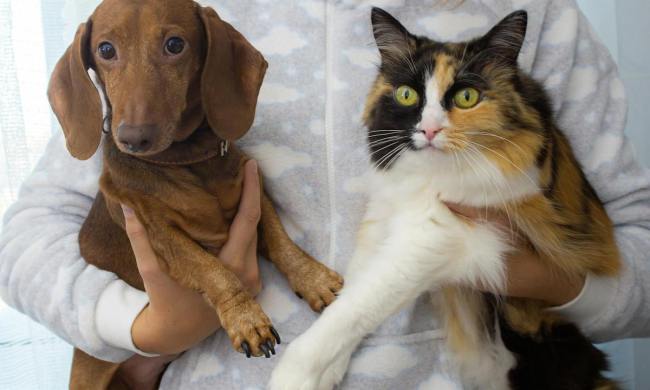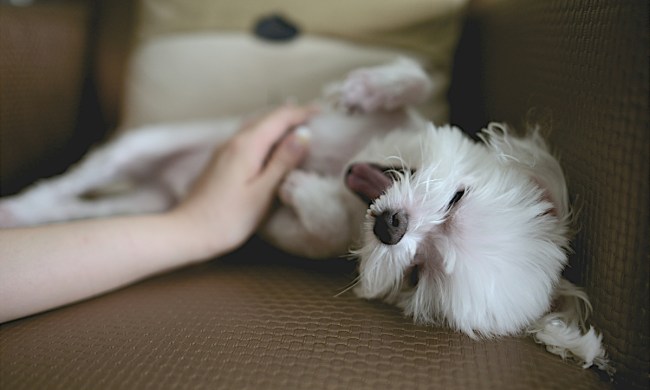You may think you’re prepared for life with a pet, but come to find out that shedding can be a bit unpredictable. Still, pup-loving people with allergies or sensitivities might want to know: Is it possible to find dogs that don’t shed? The term “hypoallergenic” gets thrown around a lot when referring to supposedly non-shedding dogs, but it’s a bit of a misnomer.
Understanding the truth behind the term is important before welcoming a new family member into your home. You want the friendship to last the dog’s entire lifetime and must ensure the pet’s shedding won’t conflict with your health needs or personal preferences. Here’s what to know about the idea that there are dogs that don’t shed.
What are hypoallergenic dogs?

Plot twist: There’s no such thing. No dog is 100% hypoallergenic. The term is used to describe dogs that don’t shed as much (but they are not non-shedding dogs). However, because they don’t shed a lot, they tend to irritate fewer people with allergies. Here’s why: Allergies get triggered by a protein found in dander, fur, and saliva. This protein triggers itchiness, sneezing, shortness of breath, and other allergy symptoms.
Less shedding means less fur around a space and fewer allergy symptoms for many individuals. Everyone is unique, though, so your body may react differently to a dog than someone else’s. Whether you have a “hypoallergenic” dog breed or not, vacuuming and dusting are great ways to remove dander.
Why should I consider shedding before getting a dog?

Some people have no issues with dog fur on their leggings, furniture, or floor (hey, lint rollers and Roombas were invented for good reasons, right?). However, others do find the fur triggers their sensitivities. It may be personal preference — not everyone enjoys seeing dog fur on their black couches. Others may have allergies to dander, which can impact quality of life. Imagine feeling the same way you do during high pollen season every day. Not fun, right?
When you get a pup, you want to make a commitment to that dog that lasts their entire lifetime. If shedding is an issue for health or personal reasons, there’s no shame in it. However, for the sake of you and any future pets, it’s something you’ll want to be clear about prior to adopting a fur child.
What dogs shed the least?
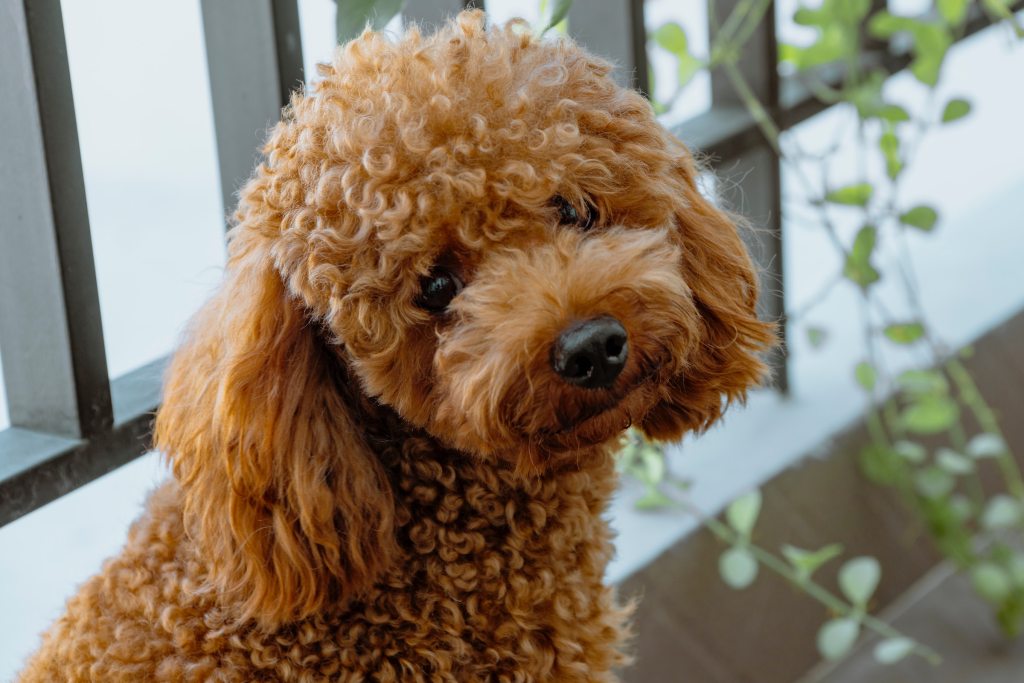
Though you won’t find any pups that are actually shed-free, many breeds certainly come close. Most of these dogs have hair rather than fur, which means less shedding but more trips to the groomer. For some pet parents, especially those with allergies, this is a welcome tradeoff. Here are 10 of those breeds.
Poodles

This stylish breed is famous for its gorgeous curls, but did you know that its coat is made of hair instead of fur? Poodles are one of the breeds that need regular, detailed grooming and brushing to keep mats and tangles at bay, but many groomers are more than equipped to handle this, according to the American Kennel Club (AKC). As a bonus, most poodle mixes have the same kind of coat.
Schnauzer

Not one, not two, but all three sizes of schnauzer made the AKC’s list of breeds that don’t shed. Of course, the larger the dog tends to mean the greater the fur, but as far as long-coated breeds go, these guys are on the lowest end of the shedding spectrum.
Cane corso

This tough-looking breed doesn’t often come to mind when one thinks of shed-free breeds, but cane corsos have short, double-layered coats that need only weekly brushing to keep your furniture fur-free, according to Purina. Springtime is peak shedding season, so this is when brushing is essential.
Maltese
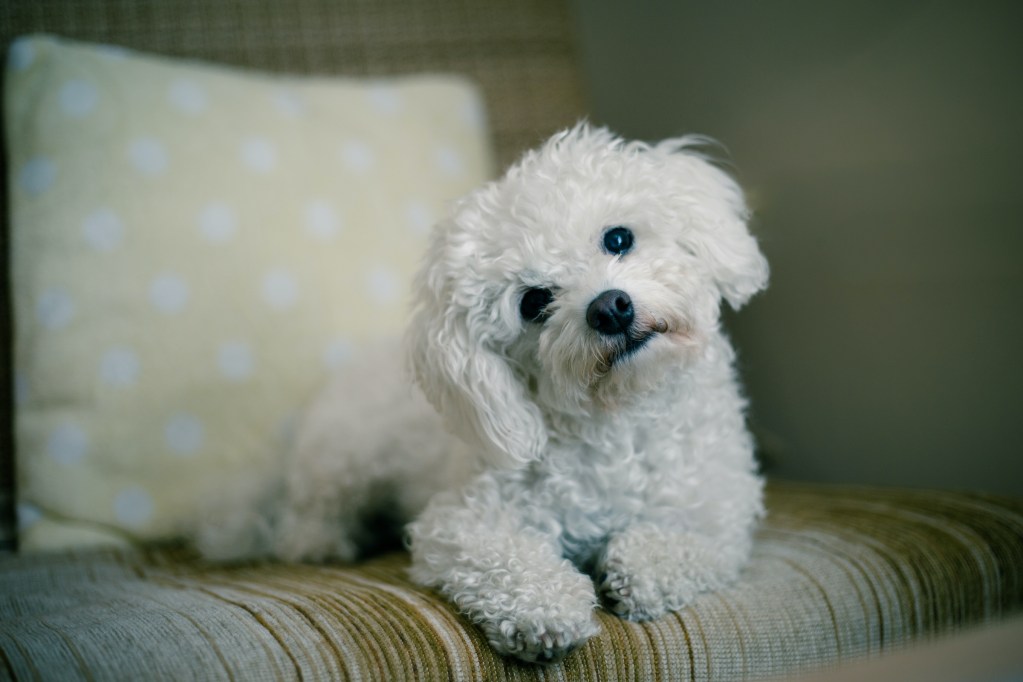
These fancy diva dogs often sport long hairdos, and this is all thanks to their non-shedding, non-fur coat. That’s right, this breed has hair rather than fur, so you won’t get nearly as much shedding around the house. You will, however, get the dog’s signature sass and grooming needs, notes Purina.
Portuguese water dog

You may remember this happy-go-lucky breed from their time in the White House during the Obama administration, but you might not know of their hypoallergenic curly coat. The texture of their coat can vary from pup to pup, but all need regular grooming.
Peruvian Inca orchid

Not all shed-free dogs have hair instead of fur — some have nearly zero fur at all. Hairless breeds such as the Peruvian Inca Orchid make wonderful canine companions in a variety of sizes and temperaments, but you’ll need to learn about doggy skincare to keep them feeling their best, according to the AKC.
Staffordshire bull terrier

These brave and loyal pups have faced some discrimination as a part of the pit bull family, but in truth, this breed has so many excellent qualities. Purina notes that these dogs’ short coats need only a quick weekly brushing to stay fresh, so you can spend more time training and bonding with your buddy.
Bichon frise
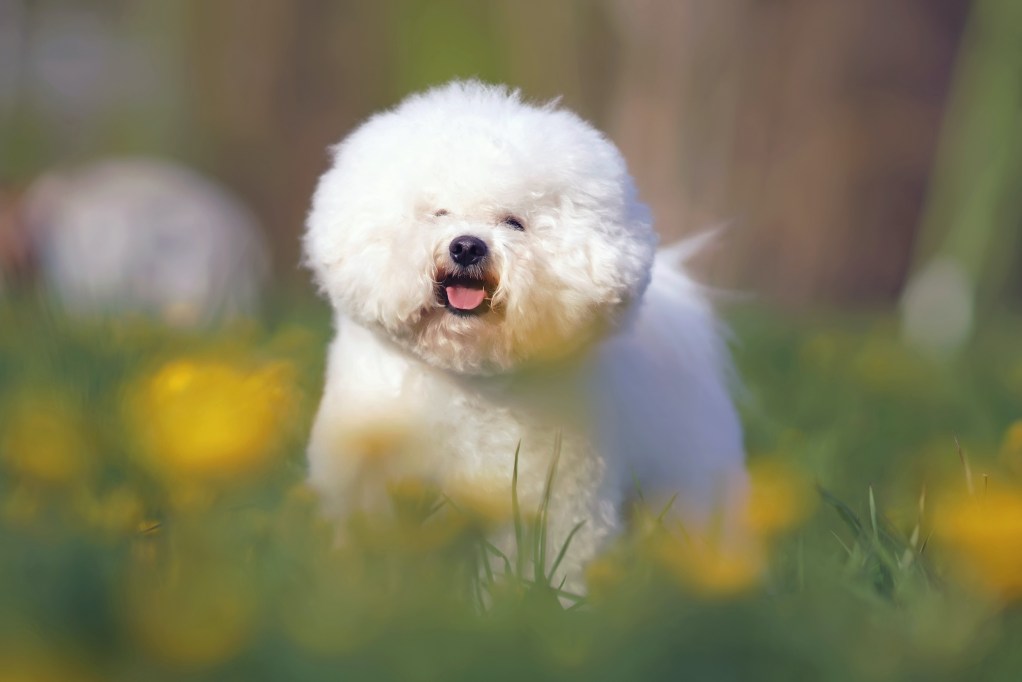
These sweet, fluffy pups have an easily distinguishable, fluffy double coat, but shedding is easily avoided with this breed. Regular grooming is necessary to discourage mats, tangles, and hair loss, so don’t forget to find a groomer you love.
Chinese crested

As another nearly hairless breed, the Chinese crested requires careful skin care and protection, especially in harsher environments, notes the AKC. These small pups do have fur on their head, tail, and feet, but not enough to make shedding an issue.
Havanese

These Cuban cuties also have hair instead of fur, which is why they’re able to achieve such luxurious locks. Remember to keep them brushed and groomed, and you’ll have one happy dog on your hands — or on your lap, really.
Tips for living with a hypoallergenic dog

Just because your pet lacks the shedding gene doesn’t mean you won’t have to keep up with fur maintenance. Even you lose hair now and then, and you should still expect some light shedding from any pup pup. Stay on top of this as much as possible to keep any allergies at bay.
In addition, these beasties often require a lot more maintenance when it comes to grooming. Make sure to budget for this if you don’t know how to do it yourself or watch a few good YouTube videos and try your own hand at the clippers. Of course, it’s important not to accidentally cut them, but your pooch doesn’t really mind if their hairdo isn’t perfect.
Lastly, anyone with a pet allergy should talk to their doctor about options, which could include long-term solutions, such as allergy shots. Severe allergies may make living with even a hypoallergenic dog impossible, so it’s best to have all the information up front.
What dogs shed the most?
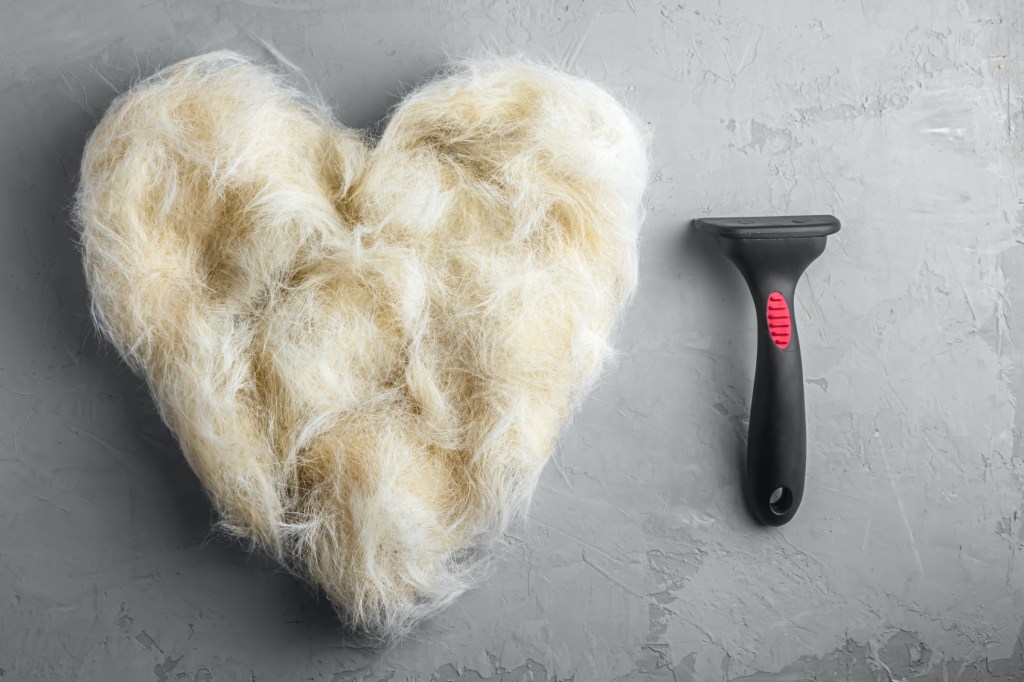
As much as we love our non-shedding four-legged friends, there are a few hairier breeds that deserve the spotlight as well. Some of these dogs lose an impressive amount of fur, so prepare yourself while you can!
As a general rule of thumb, dogs with double coats will be the heaviest shedders. These breeds have two layers of fur (one of which is sometimes waterproof) to protect them from the elements. Most of these breeds will go through heavy shedding — also called “blowing out” their coat — twice a year to accommodate the changing seasons, so this is when you’ll see the heaviest fur loss.
Some breeds with double coats include:
- Siberian husky
- Alaskan malamute
- Pomeranian
- German shepherd
- Australian shepherd
- Golden retriever
- Labrador retriever
- Beagle
- Shih tzu
And many more.
Whether you’re researching the grooming needs of a potential new companion or just learning a little more about dogs, knowing the differences in coats can be particularly helpful. Not only will you be able to anticipate a pup’s shedding level before you even meet them, but you can pass along this knowledge to others, too. It’s also important to remember that not all dogs fit exactly into their breed’s characteristics, so no matter what kind of dog you have at home — shed happens!


